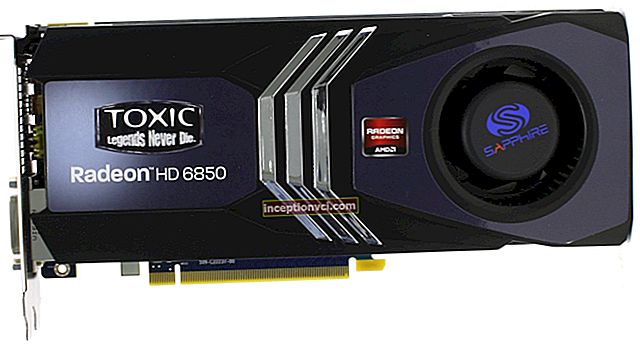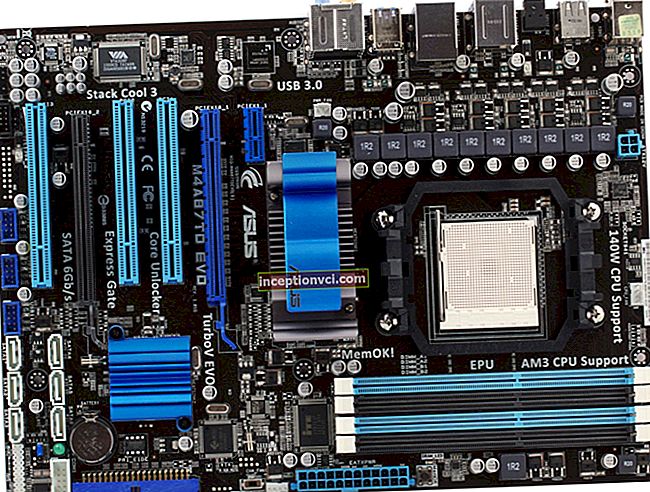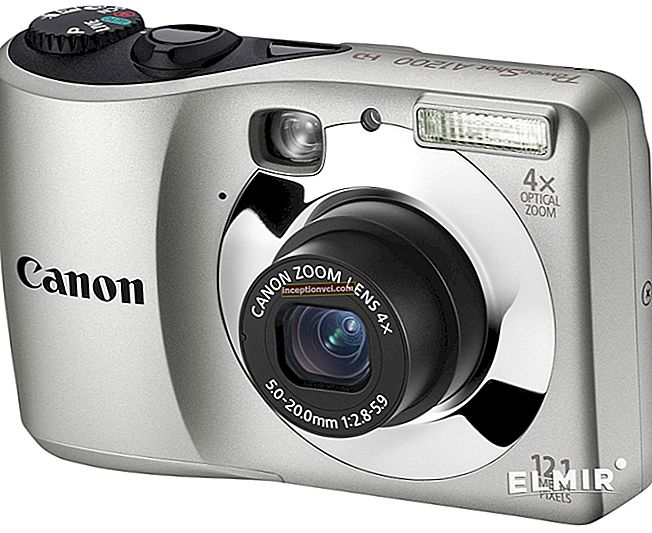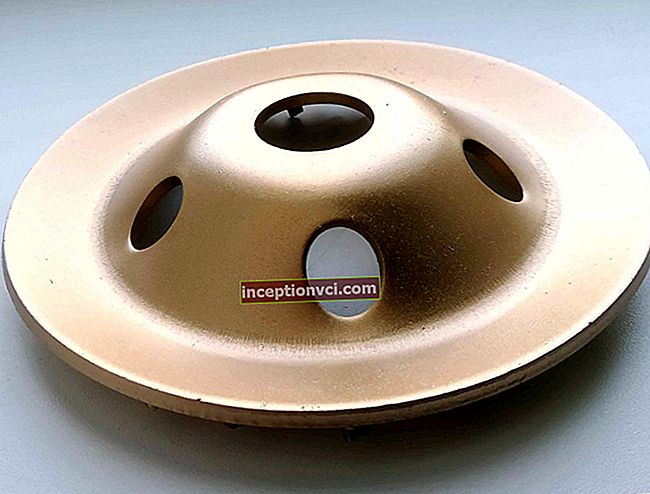Testing of three high-end motherboards based on the Intel X58 chipset.
Introduction
The reason for the dominance of the high-end desktop PC market for more than two years of the old chipset for the Core i7 processors can be quite succinctly in one word - more ... More memory channels for the processor socket that provided the need for an increased number of physical cores for memory bandwidth, more PCIe 2.0 lanes for high-speed expansion cards. And since such a concept of “everything and more” always significantly affects the price level of a product, manufacturers tend to cram as many functions as possible into already quite expensive motherboard models.
As a rule, nowadays more and more top-end LGA 1366 motherboards are equipped with a pair of eight-pin ATX12V / EPS12V standard power sockets. This is done to ensure that the processor needs energy in case of extreme overclocking. In the case of overclocking within reasonable limits, it is quite sufficient to use one additional power connector, and in the absence of overclocking at all, you can get by with a four-pin additional power connector. Let's try to evaluate the stability, functionality and performance of the three latest high-end motherboards based on the Intel X58 chipset.

Feature Comparison Chart
Asus Rampage III Extreme The Asus Rampage III Extreme motherboard in question is the most feature rich motherboard Asus has ever released. Perhaps this is how the motherboard under consideration can be characterized without exaggeration, since the arsenal of its functions contains not only the functions that the predecessors had, but also new ones. The product has support for installing up to 4 dual-slot video cards. The graphics subsystem is organized by allocating 32 lines of the north bridge out of the available 36, which allows the graphics subsystem to work in the following mode: 1 video card - the first connector, speed x16; 2 video cards - the first and third connectors, x16 speed for each card; 3 video cards - all slots switch to x8 mode. 4 video cards - all slots switch to x8 mode. The Asus Rampage 3 motherboard supports the following graphics technologies: CrossFireX 4-way and SLI3-way. Support for the Quad SLI mode has not been officially announced, since Nvidia has decided to require the installation of two NF200 PCI Express bridges to organize the operation of this mode. Asus engineers have provided the ROG Expander function that allows you to organize support for Quad SLI mode by installing an additional NF200 controller on the Rampage III board through the use of an expansion card, but such a solution will require additional financial costs. But for such solutions, they no longer think about the cost of a desktop PC. Priority is given to maximum performance, sometimes even at any cost. An unprecedented set of features for overclockers has become traditional for the "Republic Of Gamers" series. Rampage III Extreme is no exception. This is evidenced by almost every motherboard system: the graphics system discussed above, the power supply system of the processor socket, organized using two eight-pin power connectors. In addition, Asus has retired the bulky and ineffective voltage stabilization system consisting of 16 separate miniature phases by using the new Asus Extreme Engine Digi + system - which is a voltage stabilizer consisting of eight hybrid digital-analog phases. The applied stabilizer is more efficient at high loads, and it reacts to voltage changes much faster and more accurately than the previously used voltage stabilization system.An important function for overclockers is the presence of a Q-Reset button that allows you to temporarily turn off the processor power to recover from a cold-bug boot failure that may occur when extreme cooling is applied. Asus engineers found the two ways to change the BIOS settings on the Asus Rampage III Extreme motherboard insufficient, and as a result, we have a third way to control the BIOS settings from the outside - the Asus RC Bluetooth module. By simply pressing a key, this module can change its operating mode from the usual Bluetooth mode used to synchronize mobile devices with your PC and transfer data wirelessly to RC Bluetooth mode. This mode of operation of the wireless protocol allows you to remotely control your PC using a smartphone (for smartphones, the minimum permissible OS version is installed, namely: Windows Mobile 6.0, Symbian 3.1, Android 2.0 or newer versions of these mobile OS). Support for mobile operating systems Miranda and Bada has not yet been announced, but most likely support for these OS will be solved by updating the BIOS version in the near future. Connecting this feature is done by connecting the OC Station controller, already found in early Asus motherboards, to the unique 4x2-pin header located along the bottom edge of the Rampage III Extreme motherboard. The motherboard in question inherited many characteristics and functions from previous models. These are ProbeI voltage control points, a key for selecting an overclocking profile, as well as switches for PCIe x16 slots, which are designed to help an overclocker identify a video card that has stopped responding after another attempt at extreme overclocking. The motherboard uses a system of two BIOS chips and a switch that allows you to select the chip with which the board will work, while at this time you can change the BIOS parameters on the second chip. The board has in its arsenal two SATA 6 Gb / s connectors and six SATA 3 Gb / s connectors. The location of the SATA connectors does not interfere with the installation of "long" video cards at all. Such a favorable arrangement was achieved due to the refusal to place outdated IDE and floppy connectors on the board. However, it cannot be said that the layout of the connectors on the board is entirely successful. It is quite controversial to place the connectors of the front soundbar and 1394, which are moved too far back, which can create difficulties in connection on some models of cases, and when installing a long-profile video card in the lower slot, it can generally make such a connection completely impossible. In general, the orientation of the connectors along the bottom edge of the board is not entirely clear, since it can cause difficulties when connecting with the lower video card installed. The package bundle of the Asus Rampage III Extreme is quite rich, which is not surprising for a motherboard of this level. In the box we have eight SATA cables, two of which differ in color and are designed to connect 6 Gb / s devices. The kit includes a replaceable chipset cooler, as well as 2-way CrossFire and SLI and 3-way SLI bridges. Rampage 3 Motherboard BIOS Description The priority position in the BIOS menu is occupied by the Extreme Tweaker tab, which contains a large number of settings necessary for professional overclockers, and overclocking beginners will like the automatic overclocking function that works depending on the type of processor and RAM used in the system. There is a function of overclocking the processor by clock frequency to the parameters of the next model of the line, overclocking the base frequency of some memory modules to match the frequency with the X.M.P .. Well, as usual, there is a possibility to adjust all parameters manually. The limits of regulation of the parameters are as follows: by the processor frequency +/- 500 MHz, by the processor supply voltage up to 2.3 V, by the RAM supply voltage by 2.5 V. The widest range of settings for memory time delays, with the ability to automatically adjust the timings of the RAM. The presence of the Asus O.C. profile. Allows you to save up to eight BIOS setup configurations. Rampage III Extreme Utilities Local software Changing the settings for overclocking CPU Level Up in the BIOS can be done directly in the operating system. Asus TurboV Evo is another utility that allows you to change almost all BIOS settings directly from Windows. The Asus PC Probe II utility has also "matured" - now it uses a much larger number of sensors in order to warn the user about possible problems in time. Remote software An interesting utility is Asus RC TweakIt, which allows you to configure BIOS settings remotely from a second PC, allow you not only to change settings, but also control such parameters as temperature, fan speed and many others directly on the monitor of the second PC. The RC Poster utility sends the system status of the motherboard to the second PC at boot time. The RC BIOS Flashback utility allows you to perform a remote BIOS update utility. RC Remote allows remote reset or shutdown. RC Diagram presents the main parameters graphically, again on a second PC. Naturally, the use of a second PC for adjusting the BIOS parameters of the Asus Rampage III Extreme is of dubious practicality, however, this product is positioned primarily as an overclocking solution, and the use of remote access in setting up clearly gives an advantage. MSI Big Bang-XPower This motherboard is a novelty in the MSI lineup and combines the capabilities of the motherboard from Asus discussed above and the third reviewer from Gigabyte. It has six PCIe x16 slots, a couple of gigabit network controllers versus one from Asus, and, similarly to the previously reviewed model, supports remote overclocking control. Big Bang-XPower repeats the functionality of the Asus model and also supports two SATA standards has two eight-pin connectors for additional power supply to the processor socket, but unlike the competitor, a voltage stabilizer with 16 phases using flat capacitors is used, which, according to the manufacturer, improves the quality of the processor's power supply. Nevertheless, it is impossible to give everyone and everything stasis, since it is impossible to please everyone. For the sake of lowering the cost of the product, MSI engineers abandoned the use of PCIe bridges, which made it possible to implement the graphics subsystem circuit only in the same way as the model from Asus. But unlike Asus Rampage, the motherboard from MSI has two more connectors for connecting a video card, which, accordingly, given the limited number of available PCIe lines, somewhat unifies the video system of the solution. One more scheme is added to the modes available for the above-considered board: when the first and fourth connectors operate at x8 speed, and the second, third, fifth and sixth connectors operate at x4 mode. The convenient location of the full-speed slots in the positions of the first and fourth allows you to easily install a pair of dual-slot video cards, while there will be enough space between them to provide ventilation at a good level. But the use of three video cards is already a dubious "pleasure", since in such a mode slots one, three and five are able to work only according to the x8-x8-x8 scheme, while eight more lines are lost, which is rather wasteful for solving such a price range. A weak justification for such a situation is the fact that when organizing for connectors one, two and three the speed formula x16-x4-x8 or for connectors four, five and six, the formula x4-x16-x8 would exclude the possibility of using three-slot video cards, as it required would be the presence of a case with an additional slot under the motherboard. And for the top segment of motherboards, the priority is the possibility of using "large" and powerful video cards. The main category of consumers for this product, MSI, similarly to Asus, chose overclockers taking part in competitions. The set of functionality is also impressive. There are many ways to access frequency regulation, including remote access, and the presence of switches for unlocking multipliers and voltage levels, voltage control points, a screen displaying POST error codes. A special MSI OC Dashboard console is responsible for remote access to adjusting frequencies and BIOS settings, connected to which using special cables that are included in the package. We are pleased with the design of the voltage level measurement points. The applied plastic housing of the connector perfectly holds the voltmeter probes, thereby freeing the hands of the overclocker for the necessary manipulations. The location of the two available SATA 6 Gb / s ports above the fourth PCIe slot, which is the second full-speed x16 slot, is also successful, and therefore the installation of even a long video card will not block access to them. There is an external sound card based on the Realtek ALC889 codec and installed in the only PCIe x1 slot on the board. MSI riser card provides software support for Creative Labs EAX Advanced HD 5 with advanced audio features. The difference between this module and the previously used ones lies in the absence of a metal part of the casing, which frees up space for placing other elements. In addition to the standard set, the luxurious package includes only six SATA cables, a CrossFire bridge and three SLI bridges. Quite unexpectedly, there is an eSATA cable that allows you to organize additional external ports. BIOS The BIOS menu contains the ability to access all major settings for clock speeds and voltage levels. There are also submenus for managing memory delays. The Memory-Z submenu provides access to one of the xmp memory profiles. Of course, the impossibility of simultaneously viewing memory profiles is not entirely clear, but I would like to. The Advanced DRAM submenu allows you to control the memory time delays for each channel. The ClockGen Tuner submenu allows for CPU and PCIe only amplitude control. The MSI M-Flash menu will allow you to save or update in unprotected user mode using non-bootable drives up to regular USB drives. It is possible to save up to six BIOS configuration profiles with different names and descriptions thanks to the Overclocking Profile menu. Big Bang-XPower overclocking utilities MSI ControlCenter is an application that allows you to manage BIOS overclocking profiles directly from the operating system. The program menu contains three profiles of settings that allow you to change the settings of the motherboard within the limits set in the BIOS. After selecting a profile with settings, the frequencies and voltages are slowly increased to the required level. MSI Green Power utility is the opposite of overclocking utility and aims to save power. Test configuration To assess the ability of the tested motherboards to overclock memory, Kingston DDR III-2000 memory was chosen for the test bench, which is quite enough for the selected CPU. To identify the so-called "bottlenecks" in the graphics subsystem, we chose the Sapphire Radeon HD 5850 video card, which has enough power for this. Heat was removed from the processor using a Rosewill FORT120 cooler complete with Zalman ZM-STG1 high-performance thermal paste. The following tests were used to evaluate the performance: resultstests Testing in Crysis and Call Of Duty: Modern Warfare 2 Since the X58 chipset supports only two video cards in full-speed x16 mode, the NF200 bridge, acting as a line multiplier, begins to bring efficiency in the system only if three or more GPUs are installed. This fact explains the lag of Gigabyte X58A-UD9 when tested with one video card. The difference in performance is obviously minimal, but you can still see the advantage of the solution from Asus. But all the same, the gap is minimal, and most likely it will not be noticed by the user, at a time when every hertz is important for overclockers. Testing in DiRT 2 Demo and S.T.A.L.K.E.R .: Call Of Pripyat DiRT 2 does not change the board layout in order of increasing CPU frequencies. The motherboard from Gigabyte outperforms the competitor from MSI in both tests at the minimum test resolution, proving once again that the drop in performance from the NF200 controllers in a system where they are not required can be called minimal, if such a drop occurs at all. Audio and video encoding performance test The performance in the iTunes test depends on the CPU frequency, hence the leading position of the board with the lowest CPU clock frequency looks somewhat unexpected, although the advantage is not at all significant. small. In the HandBrake test, MSI takes the lead, and, as expected, for a motherboard with a minimum processor frequency, the lowest test result is expected. The picture is absolutely similar in the TMPGEnc and MainConcept tests, repeating the dependence of the results on the CPU frequency. Testing productivity in applications In Autodesk 3ds Max and Photoshop, the difference in results is one second. The performance of the anti-virus package is weakly dependent on the clock frequency, and as a consequence, there are no differences in the test results. The results obtained, in which the motherboard from MSI won by a second in each test, allows us to call it a leader in file compression tests, albeit not obvious. Performance in synthetic tests 3DMark demonstrates the superiority of the Asus solution, although the gap is not significant at all. The result obtained in the PCMark test is related to the difficulty of implementing the AHCI driver; reinstalling the driver did not bring success. The detected problem is most likely caused not by software docking, and may not appear in other modes of controller operation. The Sandra Arithmetic test reflects the difference in CPU clock speed between different motherboards. Memory bandwidth tests show that the performance of the memory subsystem is practically the same in all motherboards. Overclocking All three motherboards in question are capable of delivering a voltage level never used to overclock a desktop PC, but in competition with liquid nitrogen cooling, it will be very much in demand. The voltage limit was set to 1.45V, due to the use of air cooling for the first generation i7 processors during testing. During the test, the motherboards showed almost identical results. The difference between them was 21 MHz, which is equivalent to an increase in the base frequency by 1 MHz. Obviously, the results obtained are within the limits of the possible clock generator error for each board. The base clock was similarly overclocked for all three products. With memory testing, everything turned out to be not so simple. The memory overclocking setting in the Microstar board starts at 1600 instead of 1866 as in competing solutions, which required setting a higher base frequency to reach the memory overclocking limits. Power consumption, temperature and efficiency During performance tests, all energy saving technologies were enabled. The product from MSI has the lowest power consumption, which is practically at the level of non-overclocking solutions. Obviously, the reason for this energy conservation is the unique design of Icy Choke, which significantly reduced the temperature of the voltage regulator. The difference in performance evaluation of all three boards is only 1.25%, while the difference in clock frequency does not exceed 0.4% A very interesting picture is obtained when comparing the useful performance per unit of consumed power, which is obtained by dividing the performance by the average power consumption Conclusion. All motherboards tested in this review have the best feature set to date. Although the availability of functions is not the main task that the developers set themselves. All boards have two power connectors for the processor socket, which allows them to withstand high levels of supply currents. This fact will appeal to overclocking enthusiasts who overclock the CPU at extreme voltages. Obviously, all motherboards are suitable for overclocking using cryo cooling. Based on the results of testing motherboards in air cooling conditions, no obvious leaders have been revealed, which, in principle, was expected from the very beginning, however, MSI Big Bang XPower is clearly the leader in efficiency, which will not particularly interest overclockers. However, they will definitely be interested in the fact that MSI is not aimed at high-performance solutions using more than two video cards. The reason for this was considered above and lies in the unbeaten speed formula for the operation of x8-x8-x8 video cards. The possibility of remote control of BIOS settings is also interesting. And using a smartphone to access the overclocking settings is an interesting feature. 


 Among the new features are support for USB 3.0 standard, which is implemented through the NEC PD720200 controller or the ROG Connect USB port function, which allows you to configure the BIOS on the Asus Rampage III Extreme from a second computer, regardless of the operating OS or other applications.
Among the new features are support for USB 3.0 standard, which is implemented through the NEC PD720200 controller or the ROG Connect USB port function, which allows you to configure the BIOS on the Asus Rampage III Extreme from a second computer, regardless of the operating OS or other applications.























































































